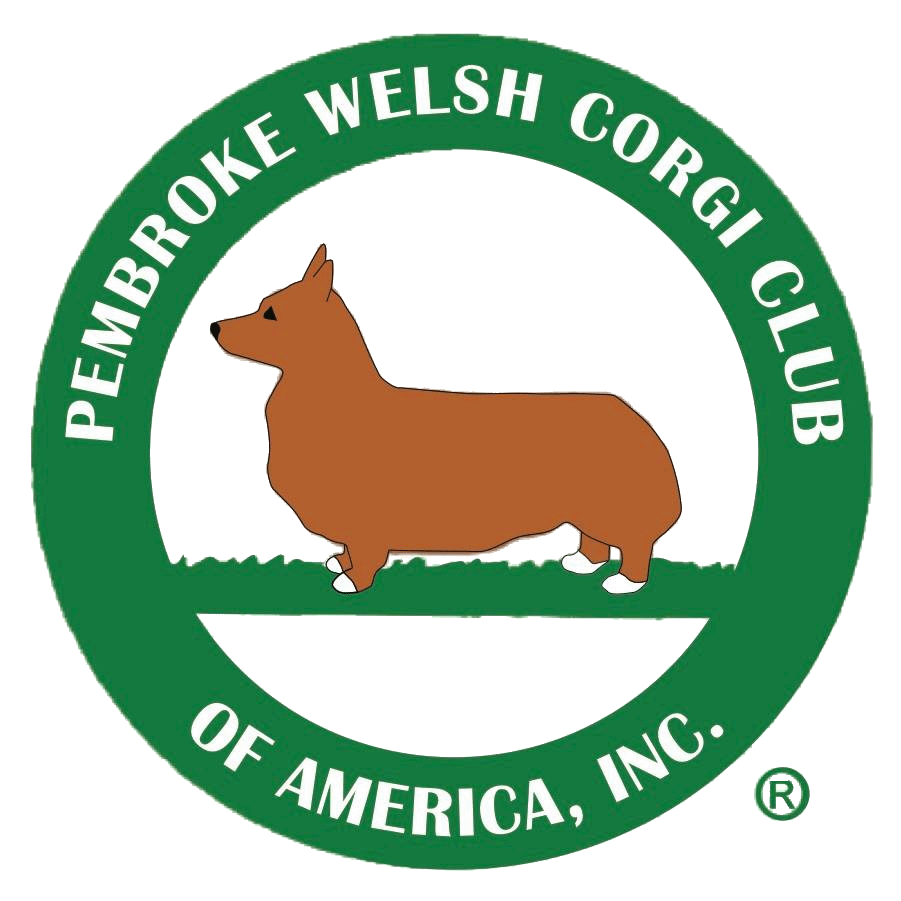Pembroke Welsh Corgi Club of America, Inc. |
CANINE DEGENERATIVE MYELOPATHY AND GENETIC TESTING IN PWCS
Dr Jerold S Bell is an adjunct Professor of clinical genetics at the Cummings School of Veterinary Medicine, Tufts University. He prepared this explanation of Canine Degenerative Myelopathy in the Pembroke Welsh Corgi to help breeders/owners of Pembrokes better understand the clinical and genetic complexities of this much misunderstood condition.
Canine Degenerative Myelopathy and Genetic Testing in Pembroke Welsh Corgis
By Jerold S Bell DVM
Degenerative myelopathy (DM) is a specific genetic disease causing spinal cord degeneration in older dogs. It has a complex mode of inheritance with the effect of more than one gene pair having to combine to cause a clinically affected dog. Affected dogs begin to show signs of the disorder usually between 8 and 14 years of age. The average age of onset in Pembroke Welsh Corgis is 11 years of age. Sporadic cases of clinically affected dogs have been pathologically confirmed in 34 pure-breeds and in mixed breed dogs, but the majority of clinical cases occur in only a handful of breeds including the Pembroke Welsh Corgi.
The clinical signs of DM begin with; weakness of the hind legs, scuffing of the hind toes, crossing of the hind legs, and progressing to dragging of the hind legs. The progression is slow, occurring over 6 months to 2 years. With excellent nursing care (and a canine wheelchair) affected dogs can progress to advanced disease; losing urine and bowel control, showing weakness or paralysis of the forelimbs, and eventually loss of control of breathing. All affected dogs are eventually euthanized - most prior to these later stages. DM is not a painful disease but one of loss of motor (muscular) and sensory (feeling) function. There is no treatment that alters the clinical progression of DM. As several different disorders can mimic the clinical signs of DM, a confirmed diagnosis can only be made through a pathological examination of the spinal cord.
In the only controlled study of breed frequencies of clinical degenerative myelopathy (UC-Davis study of the Veterinary Medical Database Program 1990-1999) 0.6% of Pembroke Welsh Corgis were diagnosed with DM. That refers to about 1 out of 167 Pembroke Welsh Corgis that will become affected with the disorder. It is possible that a higher percentage of PWCs become affected, but would not be a significantly higher percentage.
In 2008, researchers at the University of Missouri identified a recessive mutation in the sod1 gene that is homozygous “at risk” (carrying two copies) in all pathologically confirmed DM affected Pembroke Welsh Corgis (and clinically affected dogs of other breeds). Dogs that do not have two mutated copies of the sod1 gene will not develop DM. A genetic test for the sod1 mutation is available from several dog DNA testing laboratories including the University of Missouri (OFA testing).
As DM is a complexly inherited disease, clinically affected dogs must have a mutation in another (yet unidentified) gene or genes in addition to being homozygous for the sod1 mutation. Otherwise they will never develop clinical DM.
The sod1 mutation is an ancient mutation in the dog genome and is the most frequent mutation identified in the genetic screening of mixed-breed and purebred dogs. Mars/Genoscoper testing finds that the sod1 mutation frequency is 7.77% in all mixed-breed dogs tested, and 5.41% in all purebred dogs tested. In several breeds the frequency of the sod1 mutation is over 90%, but no members of the breed have ever been pathologically confirmed with clinical DM.
In PWCs, 52.7% of the breed tests homozygous “at risk” for the sod1 mutation, 35.1% test as heterozygous carriers, and 12.2% test homozygous normal. This means that on average only 1.1% of Pembroke Welsh Corgis testing homozygous “at risk” for the sod1 mutation will become clinically affected with DM. This percentage would be much higher in families with pathologically confirmed closely-related affected dogs. By itself, the results of sod1 testing are a poor predictor of clinical disease.
Due to the high frequency of the sod1 mutation but the low frequency of clinical disease in the breed, it is recommended the Pembroke Welsh Corgi breeders not use the results of the sod1 mutation in making breeding decisions unless there are confirmed DM affected close relatives (and therefore a high risk of carrying the other required mutation(s) for clinical disease).
87.8% of Pembroke Welsh Corgis test either as heterozygous carrier or homozygous “at risk” for the sod1 mutation. If breeders attempt to eliminate the sod1 mutation or only breed to the 12.2% of dogs not carrying the mutation, this will cause a severe and possibly disastrous restriction of the breed gene pool and breed genetic diversity.
There are several common disease processes in Pembroke Welsh Corgis (including spinal disc disease) that can cause similar clinical signs of DM. A sod1 test result can rule out a clinical diagnosis of DM, but cannot confirm a clinical case of DM.
While owners may be comforted in purchasing a PWC that is not homozygous for the sod1 mutation, this encompasses less than half the members of the breed. 98.9% of Pembroke Welsh Corgis testing homozygous “at risk” will never develop the disease.
More important to breeders is the knowledge of close relatives that have been pathologically confirmed with clinical DM. This gives the best indication that the dog is at high risk of carrying the other unidentified genes required for clinical disease – where sod1 testing is indicated. The best action the breed can take would be to maintain an open pedigree database of pathologically confirmed dogs with DM. Again, focusing on sod1 testing of all Pembroke Welsh Corgis will just create enormous pressure to restrict the breeding of healthy, quality dogs and severely restrict the genetic diversity of the breed.
This article can be reproduced with the permission of the author; jerold.bell@tufts.edu
